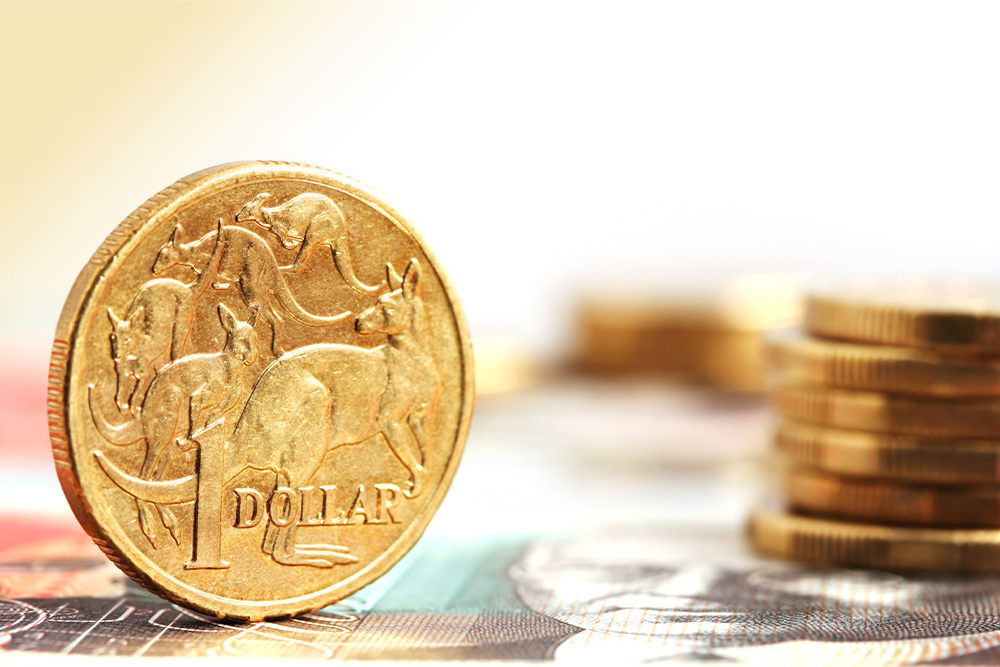Australia's obscure coin laws

If you have a jar of loose change sitting at home, spending it may not be as easy as you would think.
While Australian banknotes are legal tender throughout the country, the use of Australian coins is restricted.
Shops can refuse coins
According to the Currency Act 1965 coins are only legal tender for limited payment amounts.
You can use up to $5 worth of coins in any combination of 5c, 10c, 20c and 50c coins and up to 10 times the face value of $1 or $2 coins.
For example, if you want to pay for lunch at a café with five cent coins, you can only use up to $5 worth of five cent coins to pay. Any more than that will not be considered legal tender and can be refused by the retailer.
You can still use 1c and 2c coins
While copper 1c and 2c coins were last minted 30 years ago and withdrawn from circulation in 1992, they are still legal tender but are not considered currency (money officially released for circulation).
Copper coins are only considered legal tender in limited amounts up to 20c in value and can be exchanged with banks for face value. This means you can only use 10 2c coins or 20 1 cent coins in a transaction.
You may find they have more value to a coin collector than as legal tender.
You can’t pay with damaged coins
Damaged and worn coins are not valid currency but you can return them to your bank for face value.
If you have mutilated coins (which are not readily identifiable as coins) your bank will require you to complete a Mutilated Coin Claim form and your deposit will be sent to the Royal Australian Mint for processing. If your mutilated coins are accepted the Mint will pay you scrap metal value, not the full face value of the coin.
You can pay with collector coins
Uncirculating coins, also known as numismatic or collector coins, are intended for coin collectors and as gifts rather than for the payment of goods or services.
Uncirculating coins produced by the Perth Mint and Royal Australian Mint that feature an approved effigy of Queen Elizabeth II on the obverse side are legal tender.
These coins can also be redeemed for face value at banks, however, they’re likely be worth much more than face value for collectors.
It’s a crime to deface coins
It’s a criminal offence under the Crimes (Currency) Act 1981 to deface or destroy an Australian coin.
Defacing includes coating the surface of the coin with any sort of material.
The penalty for defacing, or selling or possessing defaced coins, is a $5000 fine or imprisonment for two years.
You may also be guilty of making counterfeit money if you alter a genuine coin.
The information in this article has been prepared for general information purposes only and not as specific advice to any particular person. Any advice contained in the document is general advice and does not take into account any person’s particular investment objectives, financial situation or needs. Before acting on anything based on this advice you should consider its appropriateness to you, having regard to your objectives, financial situations and needs.
Related topics
Things to note
The information in this article has been prepared for general information purposes only and is not intended as legal advice or specific advice to any particular person. Any advice contained in the document is general advice, not intended as legal advice or professional advice and does not take into account any person’s particular circumstances. Before acting on anything based on this advice you should consider its appropriateness to you, having regard to your objectives and needs.
Insurance Products (excluding Travel Insurance) are issued by RACQ Insurance Limited ABN 50 009 704 152 (RACQI) and arranged by its agent, RACQ Distribution Services Pty Ltd (RDS) ABN 35 116 361 650, AFSL 567130 and RDS' authorised representatives (including RACQ Operations Pty Ltd ABN 80 009 663 414, AR No. 234978 (RACQO). Conditions, limits and exclusions apply. RDS and RACQO are in the RACQ group of companies. One of the companies in the RACQ group of companies has a minority shareholding in RACQI.
RDS and RACQO have not taken your personal objectives, circumstances or needs into account when preparing advice regarding insurance products and you will need to consider whether the advice is appropriate for you. Read the Product Disclosure Statement (PDS) and any applicable Supplementary PDS before making a purchase decision on this product. You can also access our Target Market Determinations on this website. RDS receives a commission from RACQI for the policies it arranges. RACQO receives fees paid for services it provides to RDS. Further details about remuneration are available on request prior to purchasing.
Banking and loan products issued by Members Banking Group Limited ABN 83 087 651 054 AFSL/Australian credit licence 241195 trading as RACQ Bank. Terms, conditions, fees, charges and lending policies apply. This is general advice only and may not be right for you. This information does not take your personal objectives, circumstances or needs into account. Read the disclosure documents for your selected product or service, including the Financial Services Guide and the Terms and Conditions, and consider if appropriate for you before deciding.
Except for RACQ Bank, any RACQ entity referred to on this page is not an authorised deposit-taking institution for the purposes of the Banking Act 1959 (Cth). That entity’s obligations do not represent deposits or other liabilities of RACQ Bank. RACQ Bank does not guarantee or otherwise provide assurance in respect of the obligations of that entity, unless noted otherwise.
RACQ Bank subscribes to the Customer Owned Banking Code of Practice which establishes higher standards than the law requires. The Code reflects modern consumer expectations and developments in approaches to issues such as consumer vulnerability, guarantors, and supporting customers through financial hardship. Please read our Customer Owned Banking Code of Practice page for more information.
RACQ Operations Pty Ltd (ABN 80 009 663 414 AR 000234978) and Members Travel Group Pty Ltd (ABN 45 144 538 803 AR 000432492) are acting as an Authorised Representative of the issuer of the insurance, Tokio Marine & Nichido Fire Insurance Co., Ltd. (ABN 80 000 438 291 AFSL 246 548). Any advice set out above is general in nature only, and does not take into account your objectives, financial situation or needs. Before purchasing any travel products, please consider the RACQ Travel Insurance Product Disclosure Statement (PDS) and the Target Market Determinations (TMDs) that apply to these products. Whilst the PDS outlines the Terms and Conditions of these products, the TMDs outline the intended class of customers that comprise the target market for these travel products. This will allow you to consider which products best suit your objectives, financial situation and needs and consider the products appropriateness to your personal circumstances. TMDs also outline matters involving the distribution and the review of these products. The PDS, Supplementary PDS and TMDs for each travel product can be found here.
